Addressing the CFD challenge
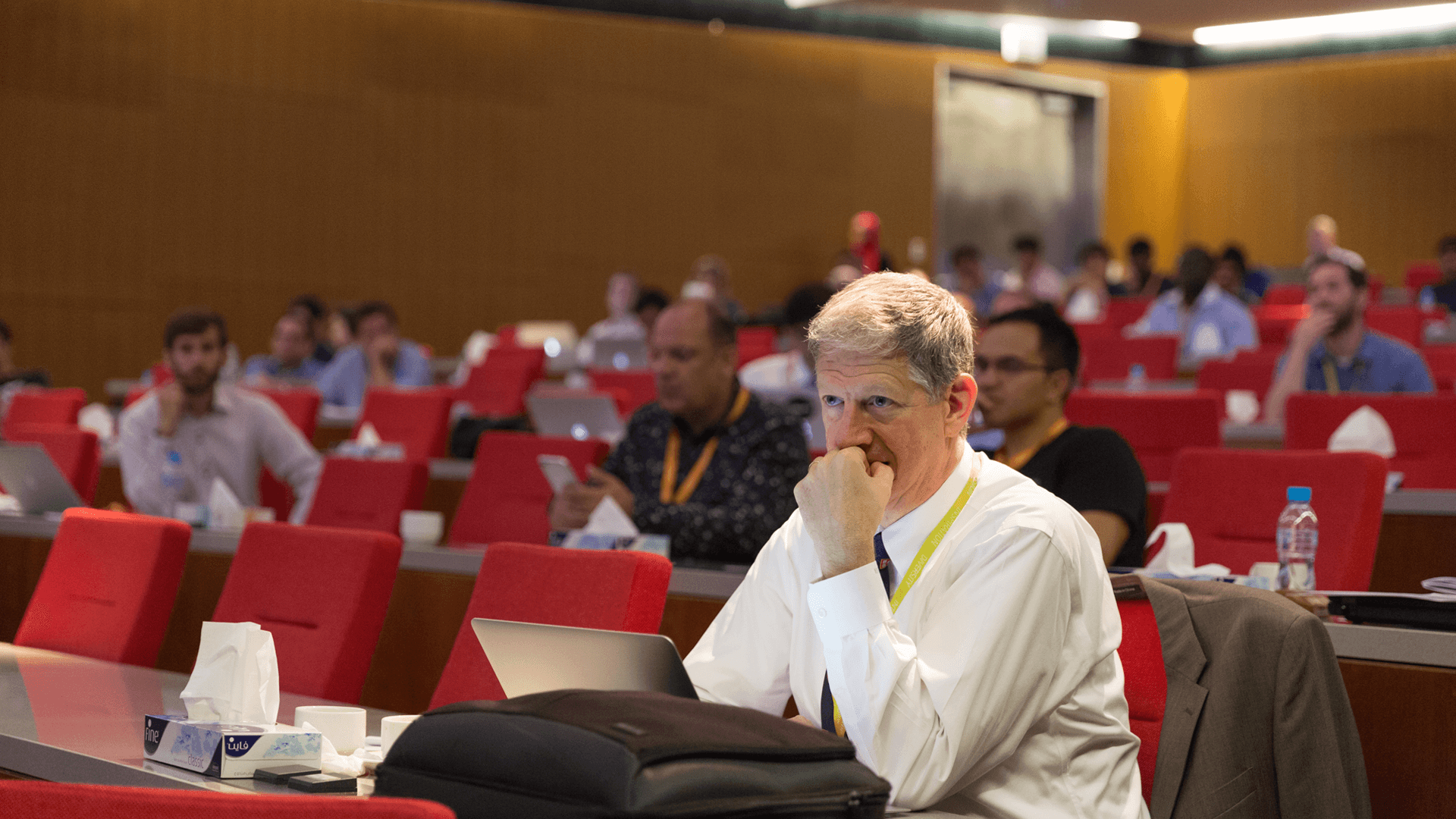
PCCFD Conference attendees discuss poster presentations at this year's event. Photo by Lilit Hovhannisyan.
Although computational fluid dynamics (CFD) is arguably the oldest area of computational science, it remains one of the most challenging and most occupied. CFD is widely used to supplement experiment and to interpolate between experimental scenarios. Globally, many research centers and labs in the private sector, government and academia are focused on developing and applying CFD algorithms.
Due to the growing numbers of problems—where live experiments are impossible, dangerous and/or too costly—CFD is increasingly applied to scenarios where it must be a predictive tool in its own right. This predictiveness requires a precision that is made possible by both algorithmic and hardware advances. At KAUST, many groups are researching CFD algorithms in various contexts, including those of Professors Im, Ketcheson, Keyes, Parsani, Samtaney, Stenchikov, Sun and others.
The University recently brought together the aforementioned researchers with local and international CFD scientists from academia and industry to discuss and present their latest work and findings at the KAUST Research Conference: Predictive Complex Computational Fluid Dynamics (PCCFD). The multidisciplinary conference held from May 22 to 24 highlighted ongoing efforts in applied mathematics, numerical analysis and computer science that are crucial to the next generation of algorithms for CFD. In particular, the event focused on cutting-edge research applied in the field of algorithmic development for CFD and multi-scale, complex flow simulations.
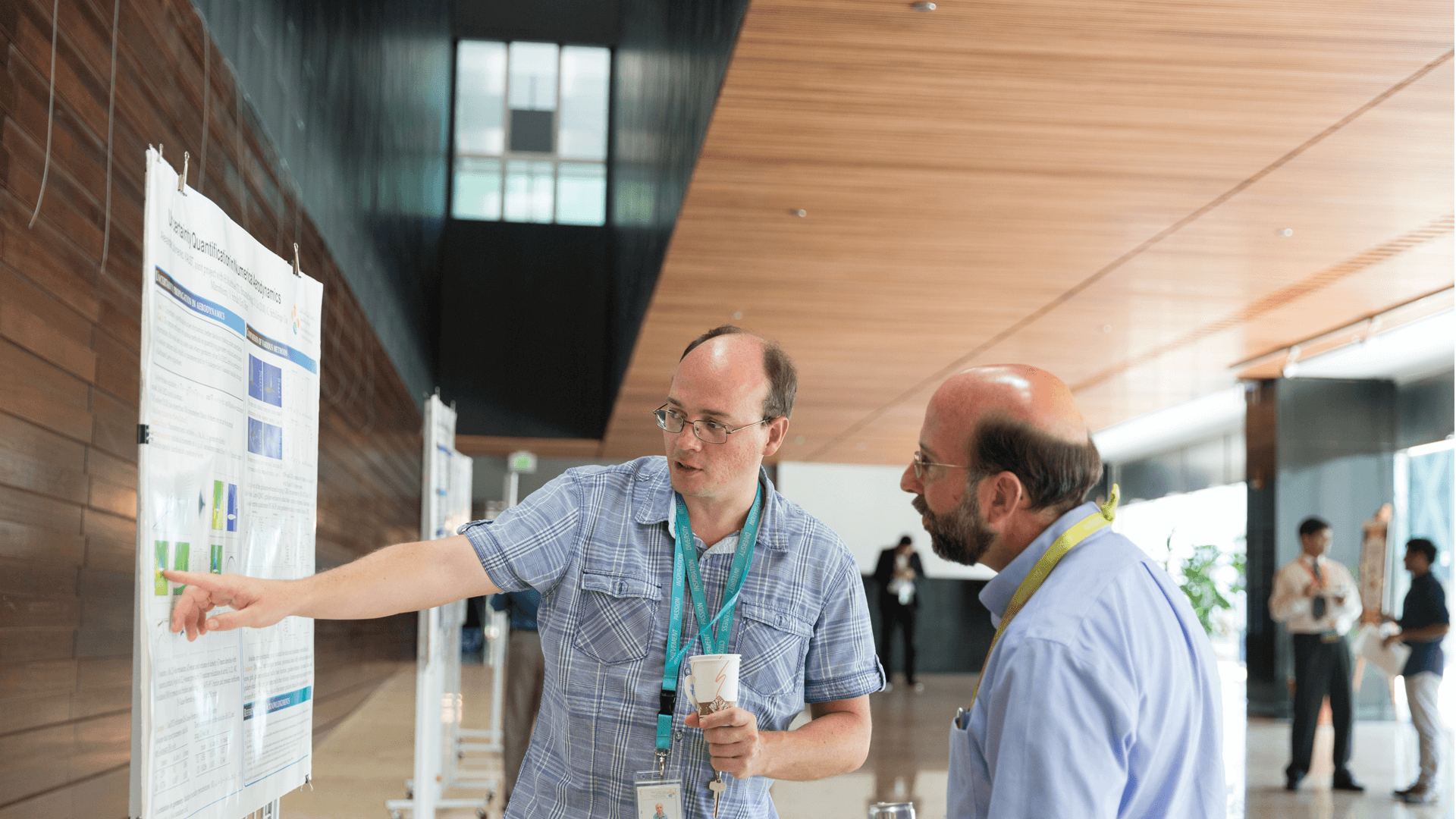
PCCFD Conference attendees discuss poster presentations at this year's event. Photo by Lilit Hovhannisyan.
Combining the 'DNA of KAUST'
Topics covered during the conference included variable-order, nonlinearly stable algorithms for compressible flows in complex geometries; efficient and robust adaptive mesh refinement (AMR); fluid-structure interaction; positivity preservation; stability of laminar flows and transition to turbulence; uncertainty quantification and global sensitivity analysis in CFD; predictive flow simulation of natural and built environments; and the importance of CFD in the aerospace and oil industry.
The case studies discussed during the event highlighted the many research groups and centers at KAUST, including applied mathematics and computational science, computational science and engineering, mechanical engineering, earth science and engineering and environmental science.
'Dissipation or dispersion'
Phillip Colella, a professor in the mechanical engineering department at the University of California, Berkeley, and a staff scientist at the Lawrence Berkeley National Laboratory and the Lawrence Livermore National Laboratory, gave the opening keynote address of the conference. His talk centered on the design of numerical algorithms for partial differential equations on next-generation computer architectures.
Colella gave several examples of how these new architectures lead to tradeoffs in the design of numerical algorithms for PDE, trading flops for bytes in a way that reduces the overall data traffic and memory footprint required to obtain a given level of accuracy in a calculation.
"We need to throw away one piece of hardware wisdom from the last century, which is that flops are expensive and you have to minimize them. Dollars per flop will decrease by a factor of 100 over a 10 year period, and this opens up a huge opportunity. However, we need to improve and reduce our communications cost and we need to get closer to the engineering for high performance," Colella said.
"One flop per byte is the best we can possibly do and we might not even achieve that. To get more flops per core, you have to do a lot of hard programming work or development. For under-resolved features, there are only two choices, dissipation or dispersion, and dispersion is generally worse," he noted.
Alliances between research and industry
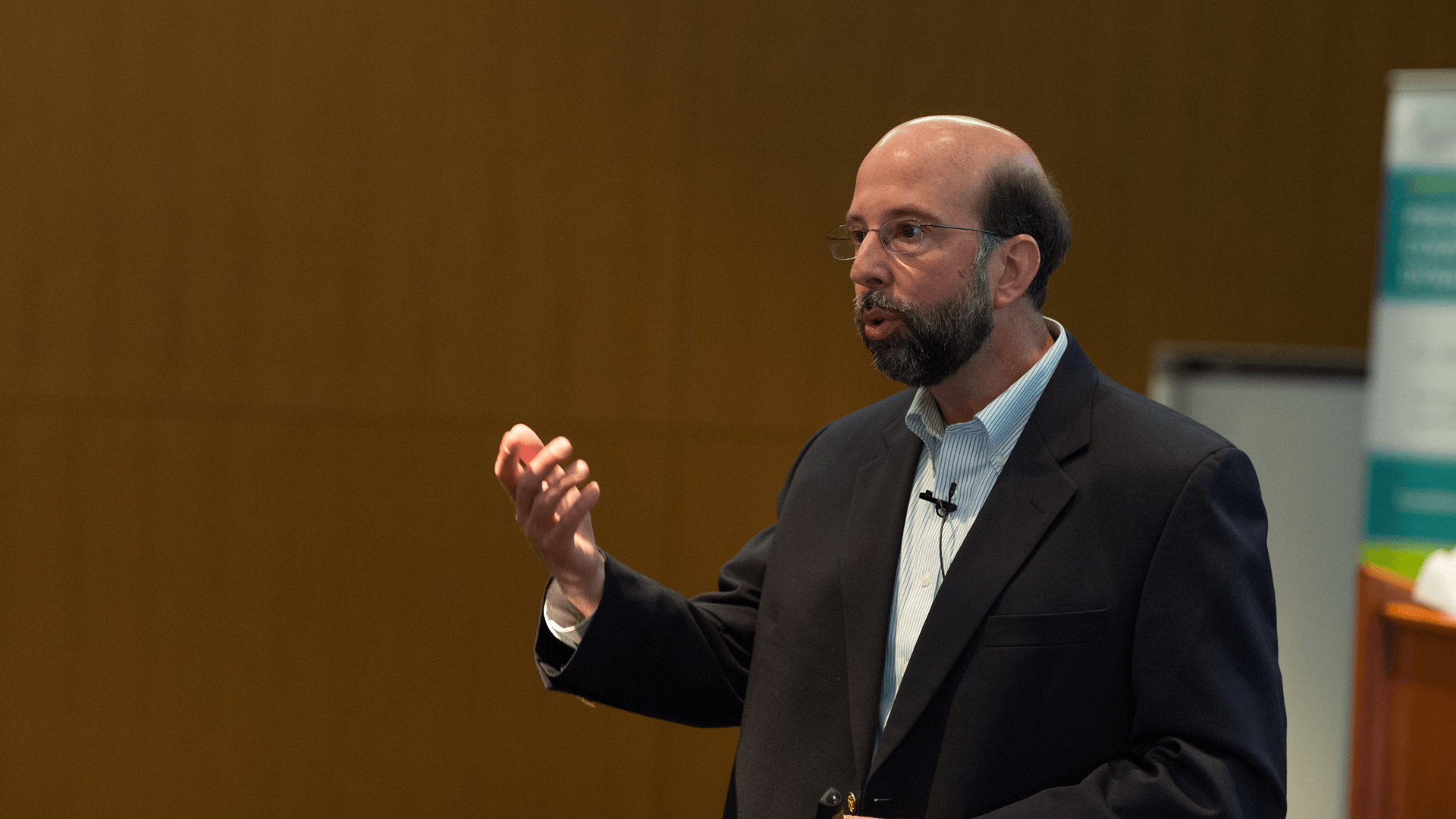
Brian Mitchell, a senior principal engineer at GE GLOBAL Research, speaks to attendees on day one of the PCCFD Conference. Photo by Lilit Hovhannisyan.
"We are very pleased to have Brian here today representing the alliance between KAUST and industry," Keyes noted.
"GE has a long history of innovation from light bulbs to jet engines, and we are constantly reinventing the industries we're impacting. GE has a core competency in aerodynamics. Aerodynamics is a very competitive and highly technical field—the world demands better performance, and we have to provide by hook or by crook," Mitchell said.
"We leverage our partnerships with many academic organizations and our various partners, including KAUST. A lot of what we've done is in the details—lots and lots of details—and organizational success requires integrated strategy," he noted.
Predicting problematic future challenges
Amanda Randles, assistant professor of biomedical engineering at Duke University, opened the second day of the conference with her keynote entitled "Treatment Planning and the Movement of Circulating Tumor Cells in the Bloodstream."
Randles' talk focused on the role hemodynamic forces have in the localization and development of a disease. She discussed computational approaches that can extend the computational models to include physiologically accurate hematocrit levels in large regions of the circulatory system. These image-based models yield insight into the underlying mechanisms driving disease progression and inform surgical planning or the design of next-generation drug delivery systems.
"We try to predict where metastasis may occur and we want to give doctors more predictive power—we build patient-specific computational models. Currently, cardiovascular disease is one of the highest burden diseases in the U.S. and metastasis is responsible for over 90 percent of cancer-related deaths," Randles said.
"At Duke, we want to understand the fluid dynamics and add in some of our cell models and also biochemistry. With all these optimizations, we've been able to make drastic improvements," she said.
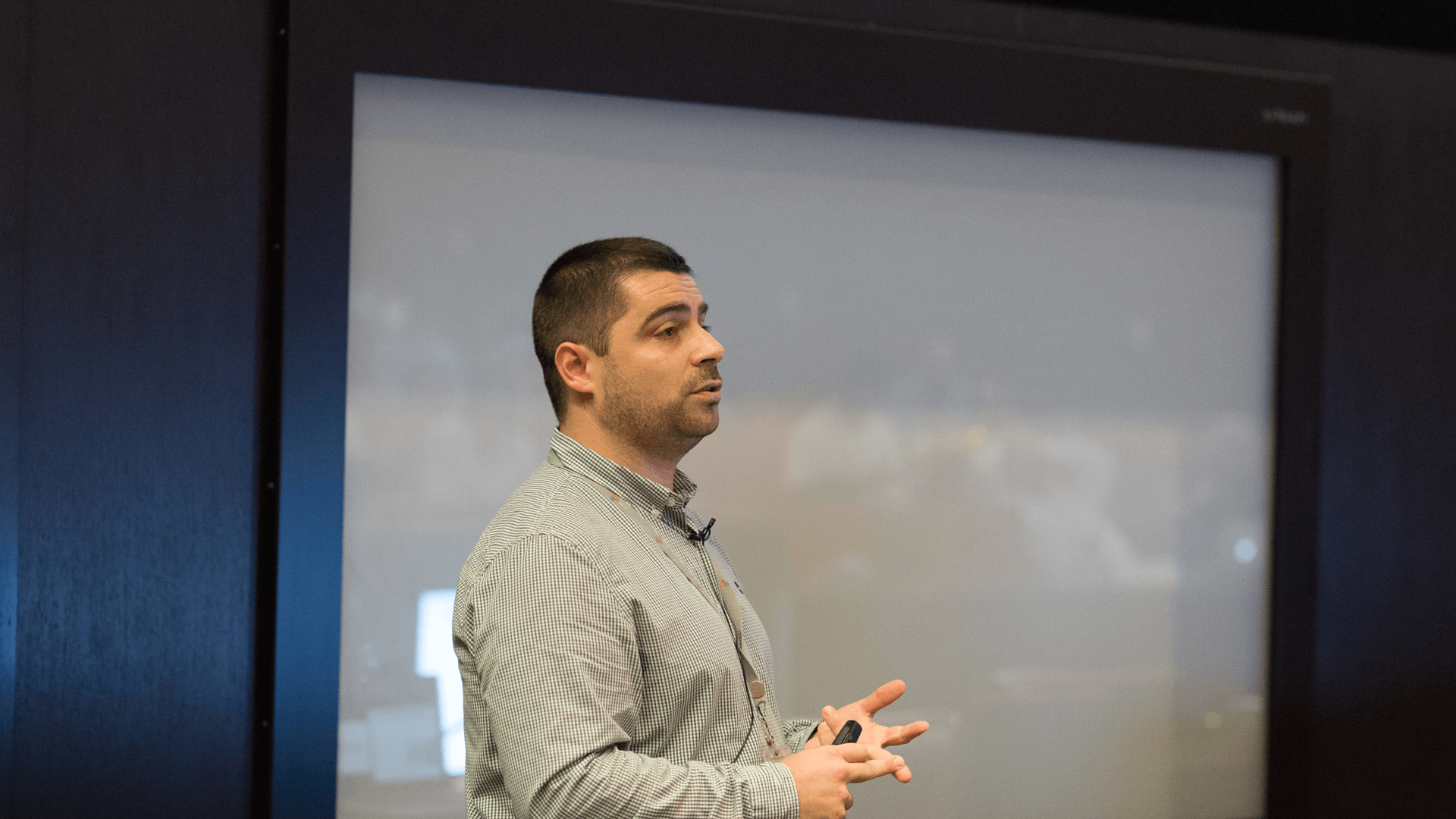
Matteo Parsani, KAUST assistant professor of applied mathematics and computational science, speaks on sustained petascale production-mode DNS of secondary flows during the PCCFD Conference. Photo by Lilit Hovhannisyan.
Manuel Torrilhon, professor of mathematics at RWTH Aachen University, delivered the closing presentation of the conference's second day. Torrilhon's talk was focused on the steady linearized Boltzmann equation using Hermite discretization.
"We are facing a challenge when you look at the two extremes. You need to go back in certain situations to close the system and solve the problem. Solving Boltzmann is at least as difficult as CFD," Torrilhon stated.
Advances in computing power
Catherine Gorle, assistant professor of civil and environmental engineering from Stanford University, opened the final day of the conference by highlighting the increasing use of CFD to inform design decisions for buildings and cities. Gorle drew attention to the fact that CFD enables the detailed investigation of flow and dispersion patterns and can be used to design for optimal pedestrian wind comfort, air quality, thermal comfort, renewable energy resources and wind loading.
"By 2030, almost 60 percent of the world's population will live in urban areas. The world's cities occupy just 3 percent of the Earth's land but account for 60 to 80 percent of energy consumption and 75 percent of carbon emissions. There is a known connection between air pollution and respiratory and cardiovascular disease," Gorle said.
"Implementing natural ventilation strategies could halve building energy consumption worldwide. Through our research, we distinguish between two types of uncertainties, and we want to ensure numerical errors are as small as they could possibly be," she added.
The emergence of CFD
Freddie Witherden, a postdoctoral fellow at Stanford University, spoke on behalf of Antony Jameson, professor of aeronautics and astronautics at Stanford. The presentation reviewed the evolution of CFD over the last four decades and covered the transition to progressively higher fidelity models and progressively more complex geometry. Industrial applications of CFD and some current developments of high order methods using unstructured meshes were also discussed.
"The emergence of CFD in the 1965 to 2005 period depended on a combination of advances in computer power and algorithms. In 1960, the underlying principles of fluid dynamics and the formulation of the governing equations (potential flow, Euler, RANS) were well-established," Witherden said.
"CFD really has been driven by advances in computing power, and even from the very earliest of days, CFD has been predictive," Witherden added.
The scope to adapt
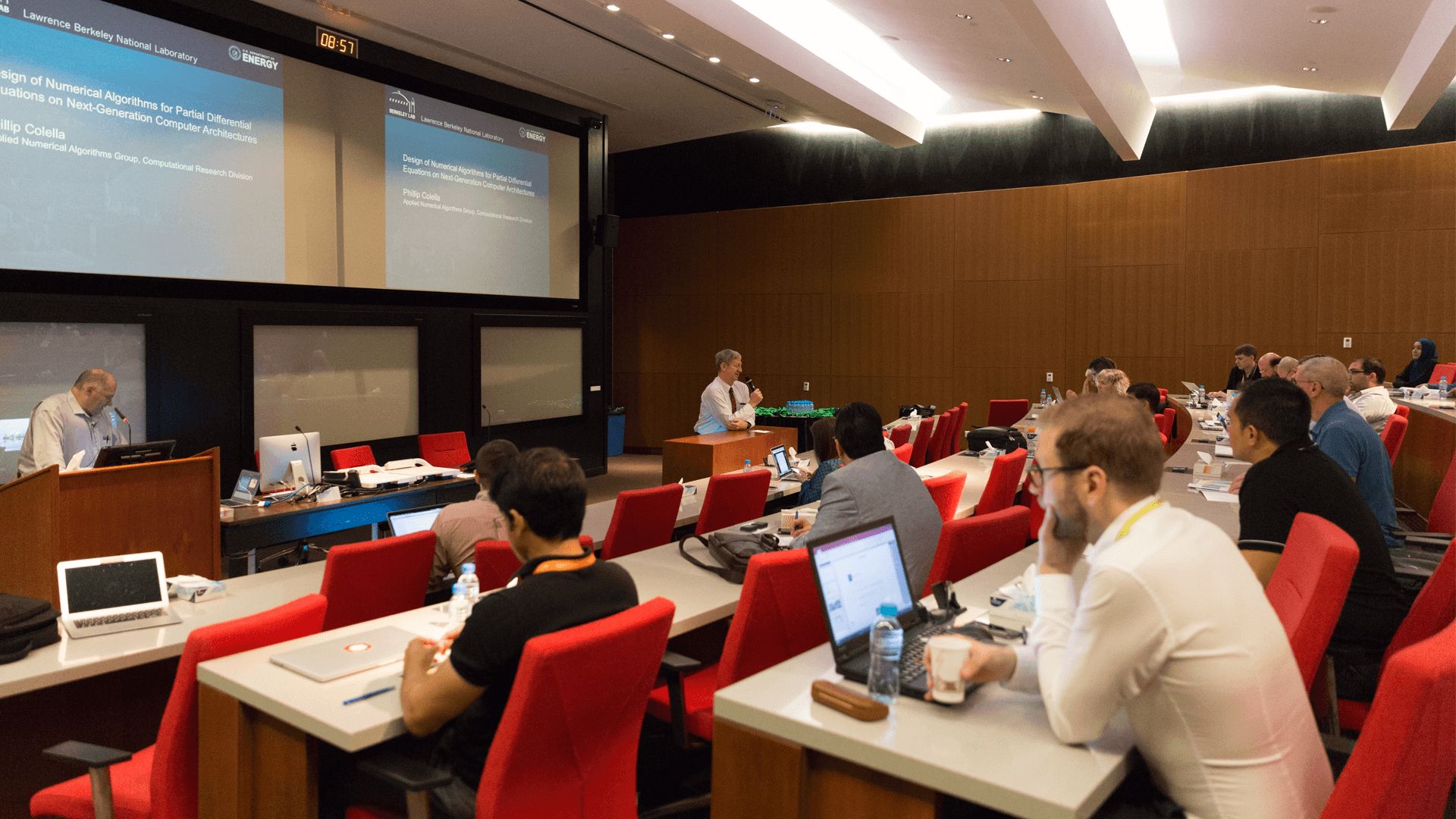
PCCFD Conference attendees discuss poster presentations at this year's event. Photo by Lilit Hovhannisyan
"While obtaining the next order of magnitude of performance, we need another order of performance efficiency. If we could just keep weak scaling with memory and memory bandwidth to go along with the extra computing capacity as we have for the past three decades, we would be in good shape. However, we now have to do more computing with less power per operation delivered to the application through strong scaling, which will be very challenging," Keyes said. "Fortunately, this part of the challenge—to make CFD more predictive—is one that is shared with many applications and is being addressed by all of the G8 countries engaged in supercomputing at the scale of KAUST and its partners."
- By David Murphy, KAUST News

